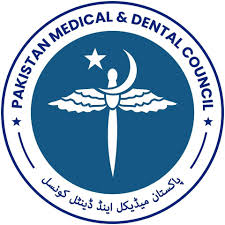Effect of physical activity level on orthodontic pain perception after separator placement in adult patients managed at a tertiary care teaching public sector hospital in Lahore
DOI:
https://doi.org/10.37018/CIAI8143Keywords:
Orthodontic, pain, separator placement,, physical activityAbstract
Background: Different behavioral therapies are used to reduce pain severity in patients undergoing separator placement apart from pharmacological treatments. However, there is limited local data.This study aimed to determine the frequency of high and low levels of activity in adult patients who needed separator placement and compared the mean pain scores with respect to baseline physical activity level following the intervention.
Subjects and methods: It was a descriptive case series carried out at the Orthodontics Department, De’Montmorency College of Dentistry, Lahore, for a period of 3 months from 15.7. 2022 to 15.9.2022. Total 120 patients aged 18 to 40 years of both genders, who needed separator placement were included in the study. Patients were excluded if they had medical conditions or systemic diseases that was a contraindication for usage of fixed orthodontic appliances, had chronic pain or pain in the orofacial or dental region, had maxillary or mandibular fracture and who had previous history of mandibular or maxillary surgery. Baseline physical activity level was noted down as per clinical history. Patients then underwent separator placement.
Results: Mean age of the patients was 28.67±6.312 years. There were 62 (51.7%) males and 58 (48.3%) females. Baseline low physical activity was found in 77 (64.2%) patients while high activity was found in 43 (35.8%) patients. Mean pain scores in the low physical activity group were 3.9±2.056 and in the high physical activity group were 2.26±2.094 and the difference was statistically significant i.e. p=0.001 as assessed by independent t-test.
Conclusion: Frequency of low physical activity level was higher in patients and it was found to be associated with higher mean pain scores compared to patients who had high baseline level of physical activity.
Downloads
Published
How to Cite
Issue
Section
License
The Journal of Fatima Jinnah Medical University follows the Attribution Creative Commons-Non commercial (CC BY-NC) license which allows the users to copy and redistribute the material in any medium or format, remix, transform and build upon the material. The users must give credit to the source and indicate, provide a link to the license, and indicate if changes were made. However, the CC By-NC license restricts the use of material for commercial purposes. For further details about the license please check the Creative Commons website. The editorial board of JFJMU strives hard for the authenticity and accuracy of the material published in the journal. However, findings and statements are views of the authors and do not necessarily represent views of the Editorial Board.

















